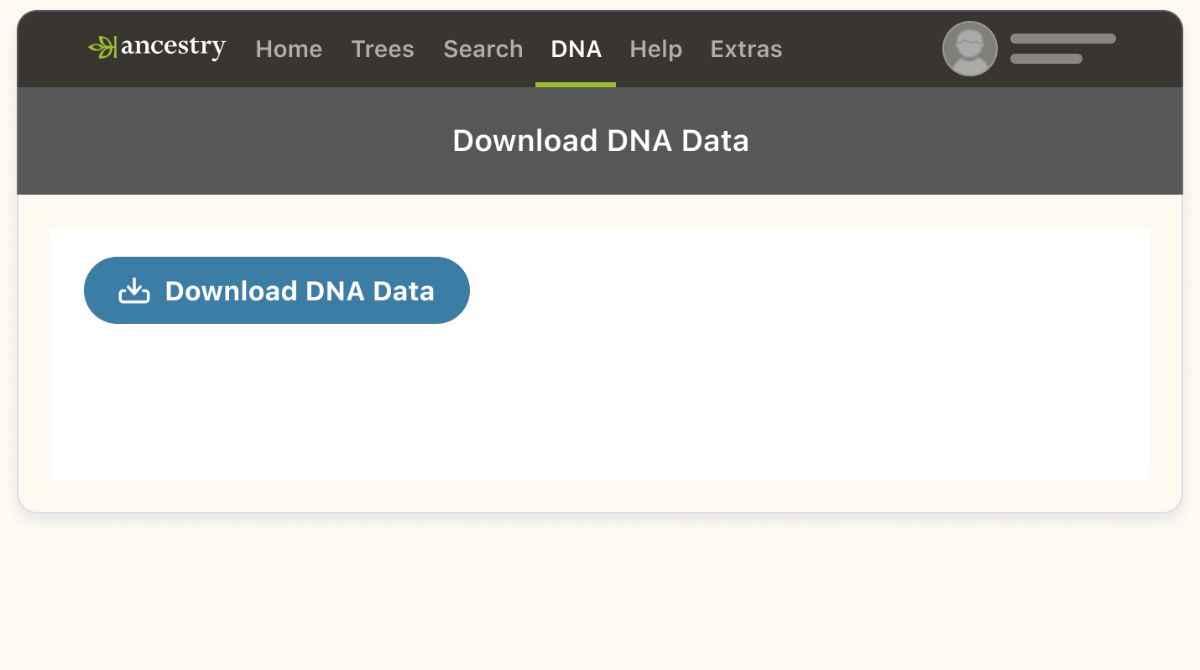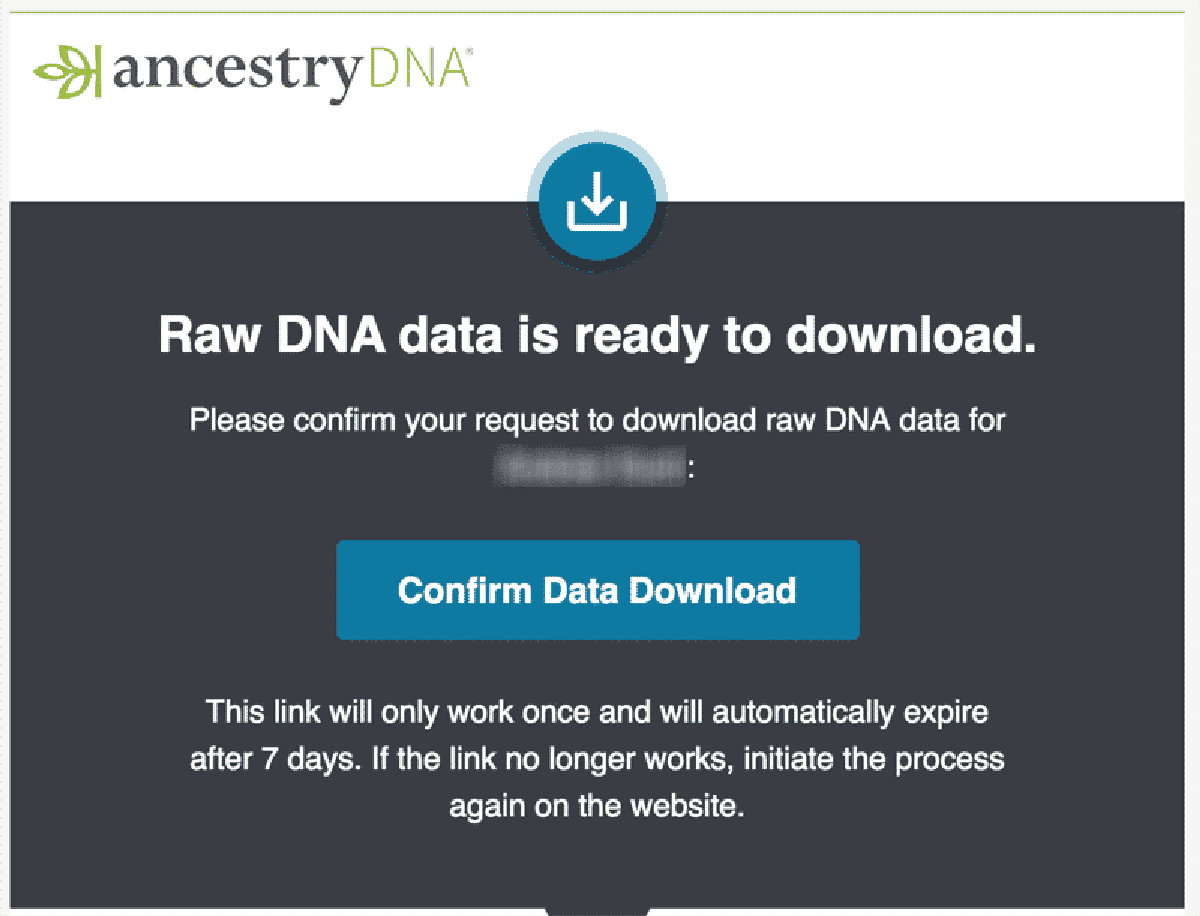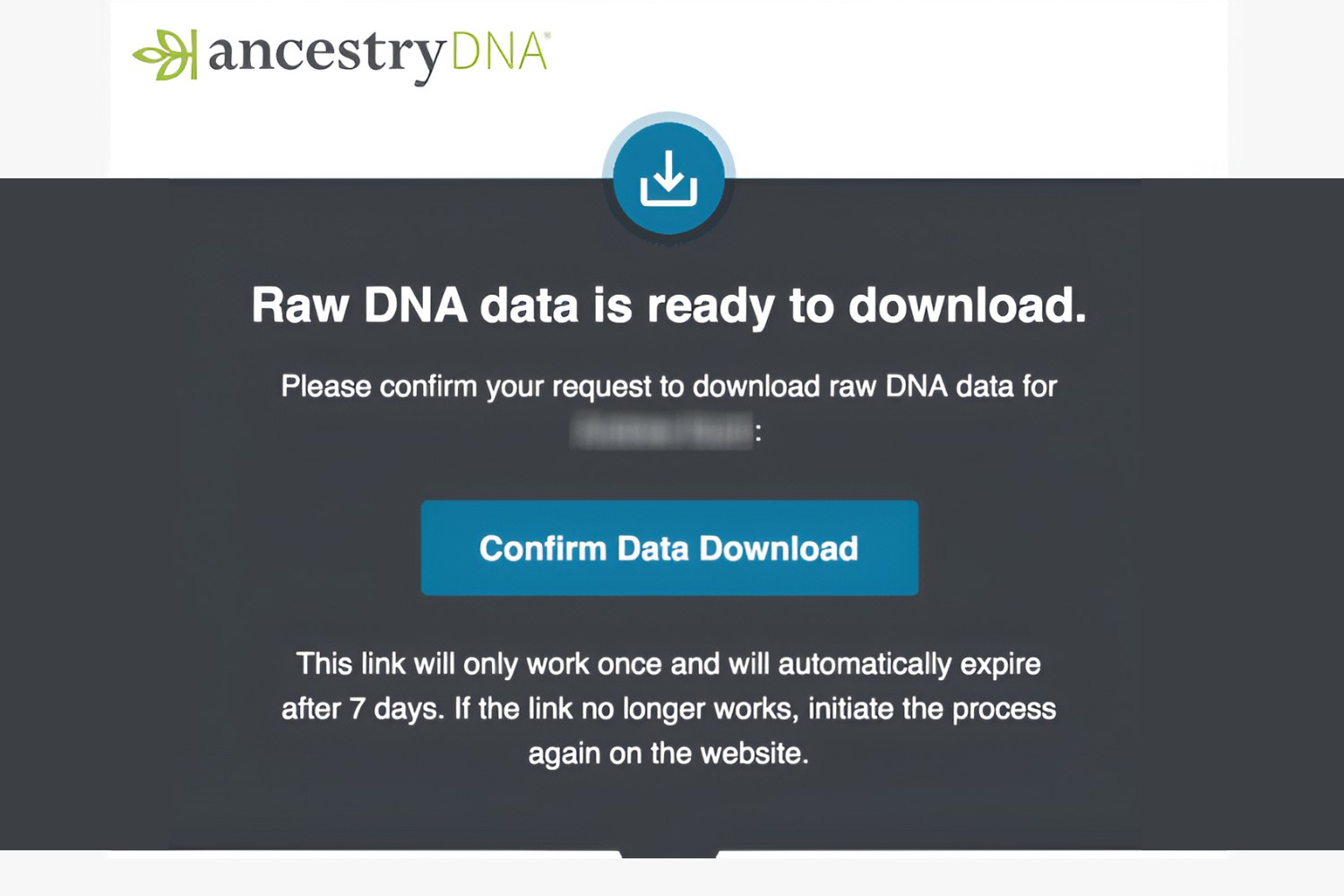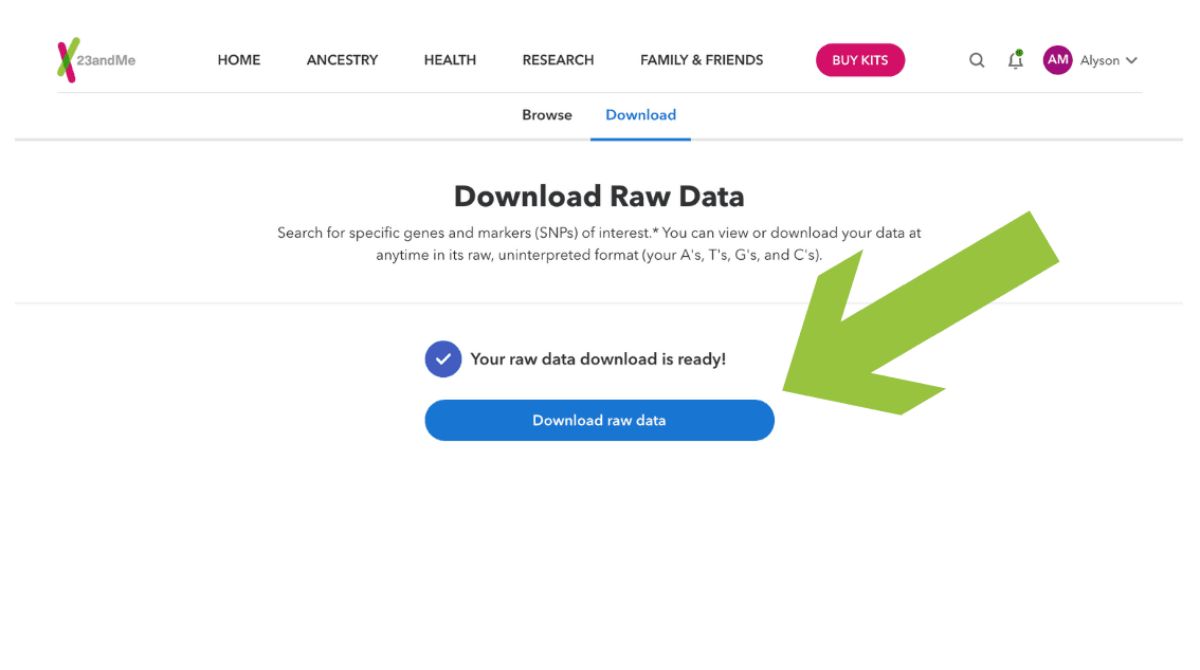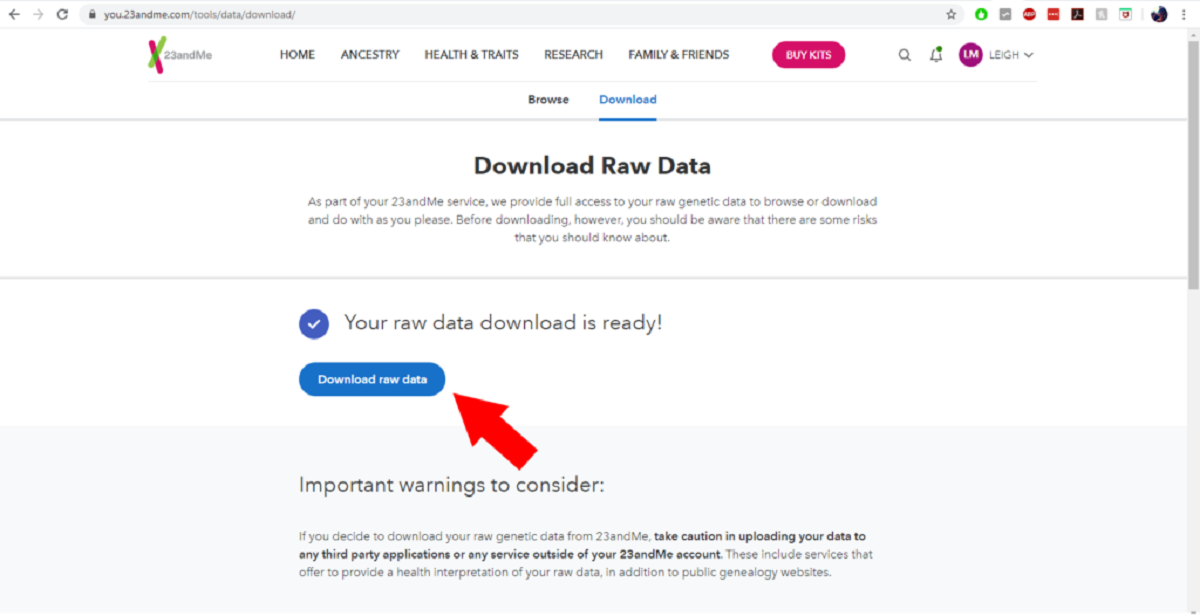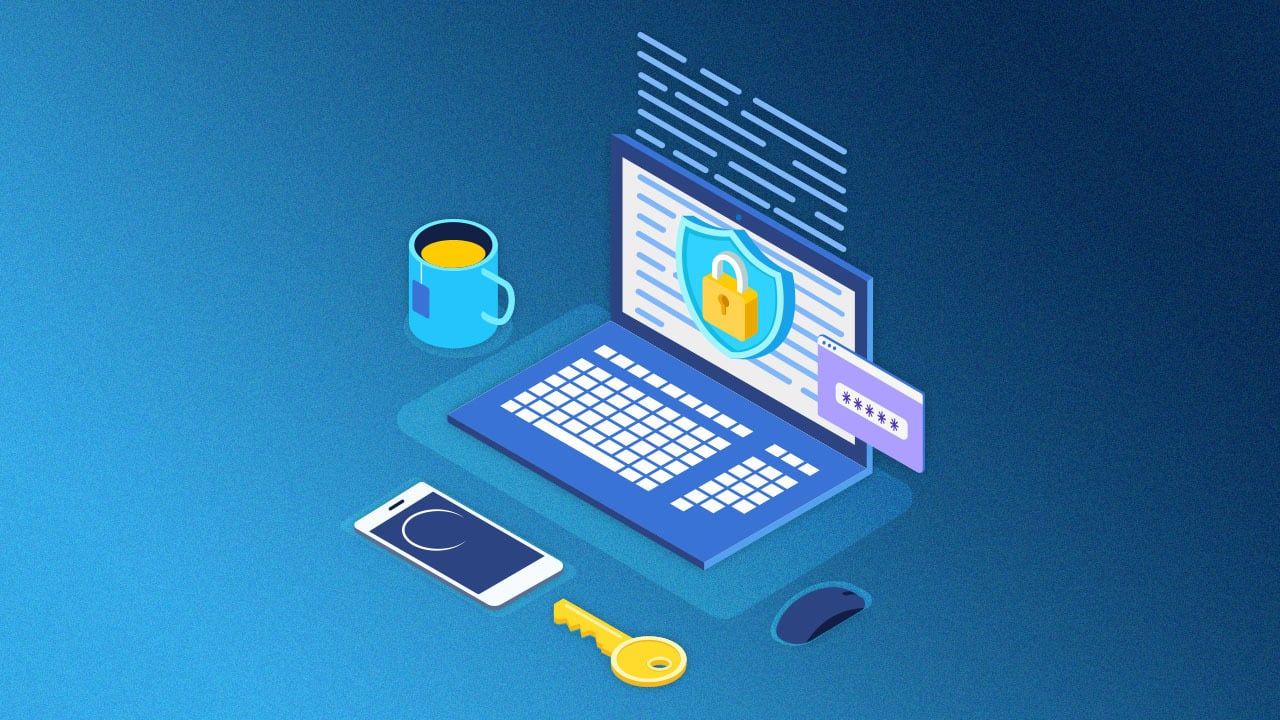Introduction
Welcome to our guide on how to download your DNA data from Ancestry! Ancestry DNA is a popular genetic testing service that provides valuable insights into your ancestry and genetic heritage. While Ancestry provides you with a wealth of information and analysis based on your DNA, you may also want to have a copy of your raw DNA data for personal use or to upload it to other genetic testing platforms for further analysis.
Downloading your DNA data from Ancestry is a straightforward process that can be done within a few minutes. By following the steps outlined in this guide, you’ll have a copy of your raw DNA data saved securely on your computer.
It’s important to note that your DNA data contains sensitive information, so you should handle it with care and keep it stored in a secure location. Additionally, be cautious when sharing your DNA data with third-party platforms or services, and always ensure their privacy policies are trustworthy.
Now, let’s dive into the step-by-step process of downloading your DNA data from Ancestry!
Step 1: Accessing the Ancestry DNA website
The first step in downloading your DNA data from Ancestry is to access their website. Open your preferred web browser and navigate to www.ancestry.com.
If you already have an Ancestry account, sign in using your username and password. If you don’t have an account, you’ll need to create one by clicking on the “Sign Up” or “Register” button and following the prompts to provide the necessary information.
Once you’re signed in, you should be directed to your Ancestry homepage. If you’re not automatically redirected, locate and click on the “DNA” tab on the top navigation menu. This will take you to the Ancestry DNA section of the website.
Keep in mind that accessing the Ancestry DNA website requires an active subscription plan or the purchase of a DNA kit. If you haven’t done so already, you may need to subscribe or purchase a kit to proceed with downloading your DNA data.
Now that you’re on the Ancestry DNA section of the website, you’re ready to move on to the next step: navigating to the DNA settings.
Step 2: Navigating to the DNA settings
Once you’re on the Ancestry DNA section of the website, you will need to navigate to the DNA settings. The DNA settings page is where you’ll find the option to download your DNA data from Ancestry.
To access the DNA settings, look for the dropdown menu that may say “Settings” or display an icon resembling a gear or a person. Click on this dropdown menu and select “Your DNA Results Summary” or a similar option.
On the DNA Results Summary page, you will find an overview of your DNA matches, ethnicity estimates, and other genetic information. This page is where you can customize your DNA preferences and access the settings related to your DNA data.
Scroll down the page until you find the section labeled “Settings.” Within this section, you’ll see various options and settings related to your DNA results. Look for the option that mentions downloading your DNA data or raw DNA file. This option may be labeled as “Download” or “Manage Test Settings,” depending on the Ancestry website’s layout.
Click on the appropriate option to proceed to the next step, where you will be able to request the download of your DNA data.
Now that you’ve successfully navigated to the DNA settings, you’re ready to move on to Step 3: requesting the download of your DNA data!
Step 3: Requesting download of your DNA data
Now that you’re on the DNA settings page, it’s time to request the download of your DNA data from Ancestry. This step involves initiating the process that will generate your raw DNA file for download.
Look for the option that allows you to request a download of your DNA data. This option may be labeled as “Request Your DNA Data” or something similar. Click on this option to proceed.
Before proceeding, Ancestry may present you with some information regarding what downloading your DNA data entails. It’s important to read through this information to understand the implications of downloading your data and how it can be used.
Once you’ve familiarized yourself with the details, you will typically be asked to confirm your decision to download your DNA data. This confirmation is usually in the form of clicking a checkbox or button that indicates your agreement to the terms and conditions associated with downloading your data.
After confirming your decision, you can proceed to the next step, which involves verifying your identity to ensure security and data protection.
It’s worth noting that the time it takes for Ancestry to process your request and generate your DNA file may vary. Some users report receiving the download link within a few hours, while others may have to wait for a couple of days. Be patient and keep an eye on your email or account notifications for updates from Ancestry regarding the availability of your DNA file.
With the request for your DNA data download submitted, you’re now one step closer to having a copy of your raw DNA data from Ancestry!
Step 4: Verifying your identity
After submitting your request to download your DNA data, Ancestry has an additional security measure in place to ensure the privacy and protection of your genetic information. This step involves verifying your identity before granting access to your DNA file.
Typically, Ancestry will send a verification email to the email address associated with your account. This email contains instructions on how to complete the identity verification process.
Open your email inbox and look for an email from Ancestry with the subject line containing a verification code or a similar message. If you don’t see the email in your inbox, check your spam or junk email folders as it might have been filtered there.
Once you locate the email, open it and read the instructions carefully. It will likely ask you to click on a verification link or enter a verification code provided in the email.
Clicking on the verification link will usually redirect you to a secure page on the Ancestry website where you can confirm your identity. If prompted, provide the necessary information as requested to complete the identity verification process.
Completing the verification process confirms that you are the rightful owner of the DNA file and that you have authorized the download. This additional security step helps protect your genetic information and prevents unauthorized access to your DNA data.
After successfully verifying your identity, you’re now ready to proceed to the final step: downloading your DNA data from Ancestry!
Step 5: Downloading your DNA data
With your identity verified, it’s time to download your DNA data from Ancestry. Here’s how you can easily retrieve your raw DNA file:
After completing the verification process, return to the DNA settings page on the Ancestry website. Look for the option that allows you to download your DNA data. It may be labeled as “Download DNA Data,” “Get Raw Data,” or something similar.
Click on this option to initiate the download process. Ancestry will generate your DNA file, which may take a few moments depending on the size of your data and the server’s processing speed.
Once your DNA file is ready, a download prompt will appear on the screen. You can usually choose to save the file directly to your computer or specify a preferred download location.
Before proceeding, it’s recommended to review the terms and conditions or any additional information provided by Ancestry regarding the use and storage of your DNA data. Make sure you understand the implications and privacy considerations associated with downloading your data.
Once you have reviewed the information, click the “Download” or “Save” button to begin the downloading process. Your DNA file will be saved to your computer in a compressed format, such as a zip or tar file.
After the file has finished downloading, locate the file on your computer and ensure it’s securely stored in a safe location. It’s a good practice to create a backup of your DNA file to avoid any accidental loss or damage.
Congratulations! You have successfully downloaded your DNA data from Ancestry. Now, you can proceed with further analysis or upload it to other genetic testing platforms or third-party services that accept raw DNA data.
Remember, your DNA data contains sensitive information, so it’s essential to treat it with care and ensure its safekeeping. Be cautious about sharing your DNA file with third-party services and only do so after thoroughly reviewing their privacy and security policies.
Now that you have your DNA data downloaded, you can explore the fascinating world of genetic analysis and uncover more about your ancestry and genetic heritage!
Step 6: Saving and storing your DNA file
After successfully downloading your DNA data from Ancestry, it’s crucial to save and store the file securely. Here are some important considerations for preserving your DNA file:
Firstly, it’s recommended to create a dedicated folder on your computer specifically for storing your DNA-related files. This will help you keep your files organized and easily accessible in the future.
Next, rename the downloaded file to something descriptive and meaningful, making it easier to identify later. It’s best to include the date of the download or any other relevant information in the file name.
Consider creating a backup of your DNA file on an external storage device, such as an external hard drive or USB flash drive. This additional copy will serve as insurance in case something happens to your original file.
It’s highly recommended to encrypt your DNA file to add an extra layer of security. There are various encryption tools available that can help protect your data from unauthorized access.
Consider storing your DNA file in a cloud storage service for added protection and accessibility. Many cloud storage providers offer secure options with encryption and backup features. However, be sure to choose a reputable and reliable cloud storage provider that prioritizes data privacy.
Remember to keep multiple copies of your DNA file in different locations. This will help safeguard your data in case of unexpected events like computer failure, loss, or damage.
Periodically check for updates from Ancestry, as they may release new versions or updated formats of the DNA file. Staying up to date ensures compatibility with future genetic analysis tools and platforms.
Lastly, it’s vital to review and understand the privacy policies of any platform or service you intend to upload your DNA file to. Ensure that they have proper security measures in place to protect your data and that you are comfortable with their terms.
By following these steps and best practices, you can ensure the long-term preservation and security of your DNA file. Having a securely stored and backed-up DNA file allows you to explore new avenues of genetic analysis and ancestry research in the future.
Conclusion
Downloading your DNA data from Ancestry is a simple process that allows you to have a copy of your raw genetic information. By following the steps outlined in this guide, you can easily access, request, and download your DNA data from Ancestry’s website.
Remember, the download and storage of your DNA file should be handled with care. Take the necessary precautions to ensure the security and confidentiality of your genetic information. Store your DNA file in a safe and secure location, create backups, and consider encrypting the file for added protection.
Having a copy of your DNA data provides you with the flexibility and freedom to explore further analysis, upload it to other genetic testing platforms, or utilize it for research purposes. Keep in mind that sharing your DNA data with third-party services should be done with caution and after thoroughly reviewing their privacy policies.
Ancestry DNA offers valuable insights into your ancestral history and genetic heritage. By downloading your DNA data, you can have a comprehensive understanding of your genetic makeup and potentially discover fascinating details about your family’s past.
Remember to stay informed and keep up with any updates or new features from Ancestry, as they may enhance the analysis and functionality of your DNA data in the future.
Downloading your DNA data is just the beginning of your genetic exploration journey. With your DNA file securely stored, you can dive into the world of genetic genealogy, uncover ancestral connections, and continue to explore your heritage.
Enjoy the fascinating journey of self-discovery and genealogical exploration as you delve into the depths of your genetic makeup!







